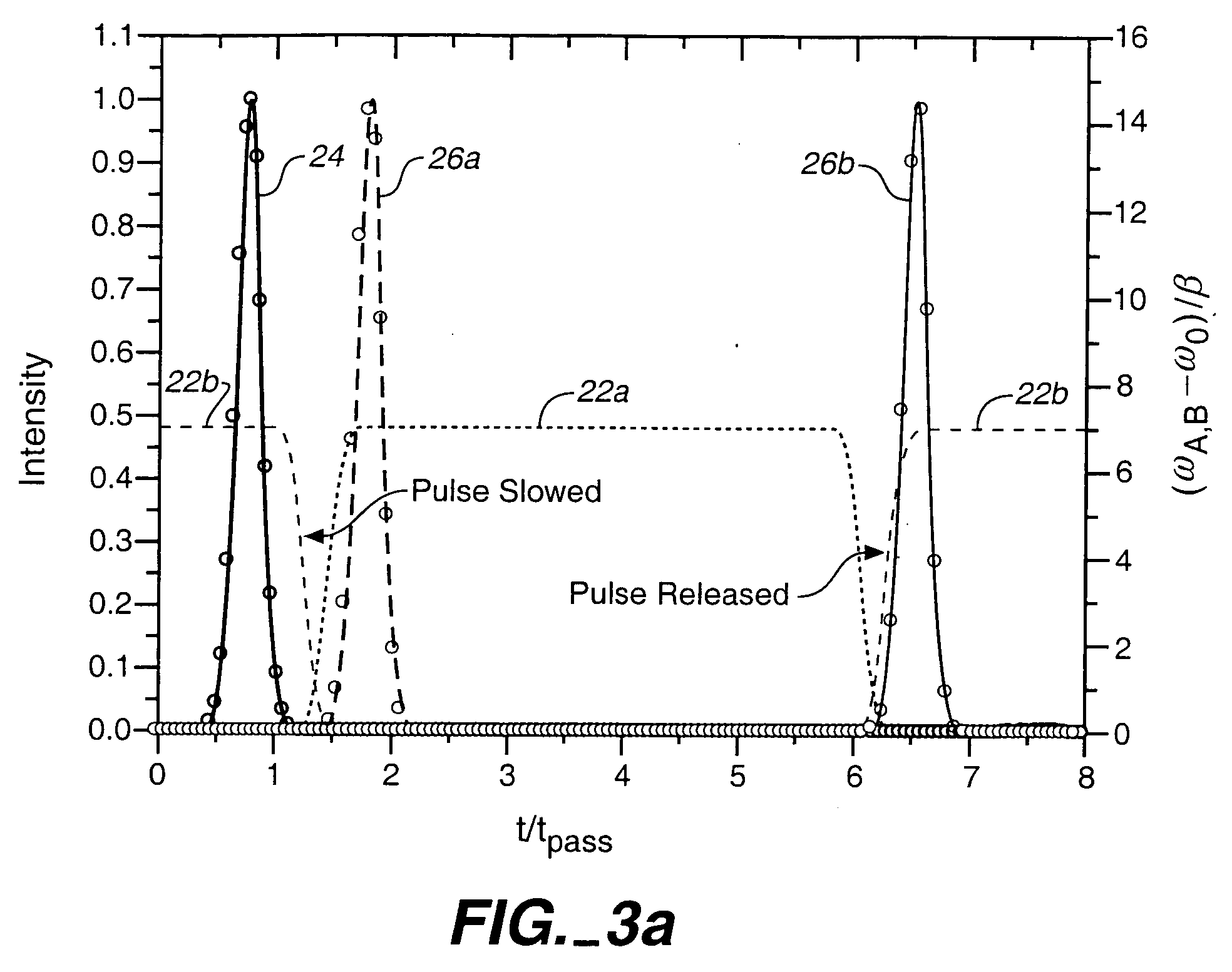Ultra-slow down and storage of light pulses, and altering of pulse spectrum
a technology of light pulses and pulse spectrum, applied in the field of optical systems, can solve the problems of imposing severe constraints on the operation conditions, few very special and delicate electronic resonances available in nature possess all the required properties, and the demonstrated operating bandwidth is far too small to be useful for most purposes
- Summary
- Abstract
- Description
- Claims
- Application Information
AI Technical Summary
Benefits of technology
Problems solved by technology
Method used
Image
Examples
Embodiment Construction
[0033] Here we introduce a set of criteria to overcome the fundamental limit imposed by the delay-bandwidth product in optics in trying to delay optical pulses. These criteria enable one to generate arbitrarily small group velocities for optical pulses with a given bandwidth, while preserving all the coherent information entirely in the optical domain. We show that these criteria can be achieved in optical resonator systems using only small refractive-index modulations performed at moderate speeds, even in the presence of losses. In addition, since the bandwidth constraints occur in almost all physical systems that use resonance enhancement effects, our approach to overcome such constraints is applicable to a wide range of systems and applications.
[0034] In order to coherently stop an optical pulse with a given bandwidth in an all-optical system, the following criteria are preferably satisfied:
[0035] (a) The system possesses large tunability in its group velocity. To allow for an ...
PUM
 Login to View More
Login to View More Abstract
Description
Claims
Application Information
 Login to View More
Login to View More - R&D
- Intellectual Property
- Life Sciences
- Materials
- Tech Scout
- Unparalleled Data Quality
- Higher Quality Content
- 60% Fewer Hallucinations
Browse by: Latest US Patents, China's latest patents, Technical Efficacy Thesaurus, Application Domain, Technology Topic, Popular Technical Reports.
© 2025 PatSnap. All rights reserved.Legal|Privacy policy|Modern Slavery Act Transparency Statement|Sitemap|About US| Contact US: help@patsnap.com



